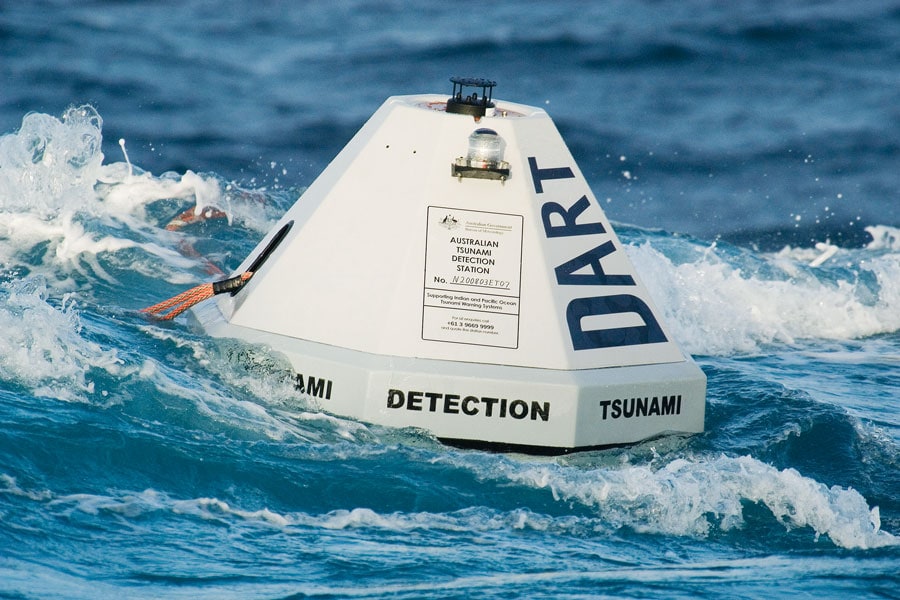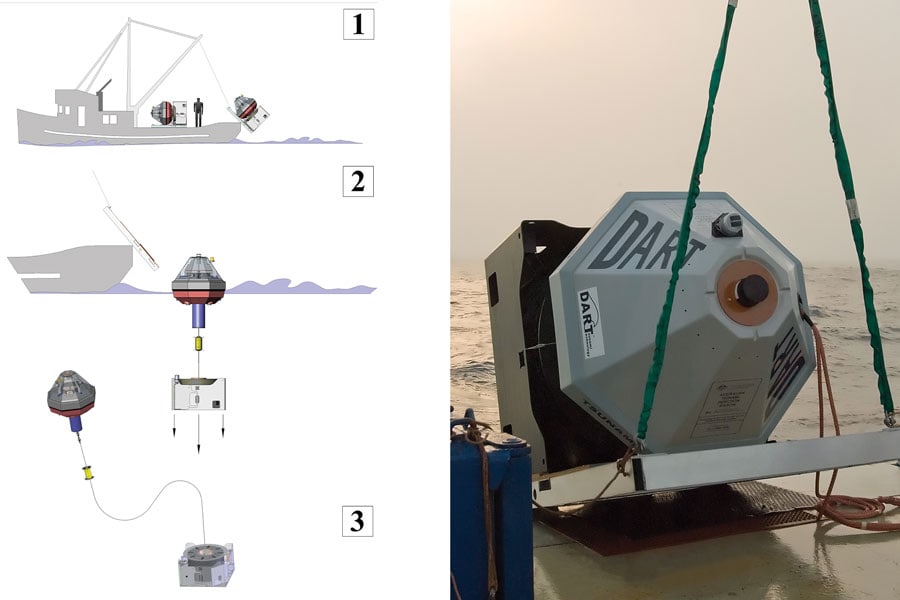The Challenge
When the National Oceanic and Atmospheric Administration (NOAA) wanted to decrease deployment infrastructure and costs for its tsunami warning buoys system, Cortland was approached to develop the mooring line for the world’s first Easy-To-Deploy (ETD) mooring system, the latest in buoy and mooring technology.
The Solution
Normally mooring line systems connect a multitude of cables, which makes them cumbersome, large and difficult to install. However, Cortland’s innovative solution, developed and patented in conjunction with NOAA, offers significant installation and maintenance cost advantages over conventional designs. The durable construction of Cortland’s ETD (Easy to Deploy) oceanographic mooring line system eliminates connecting hardware, which means that the systems last longer, are more reliable, and reduce operation and maintenance costs compared with traditional solutions.
NOAA’s ETD system includes Cortland’s mooring line and an anchor subsystem, with the buoy’s own reel and spooling system functioning as its anchor. The ETD’s small size and ease of deployment means it can be installed by a small vessel, thus reducing crew and vessel requirements.
With over 40% of the world’s population presently living within 2 miles of the ocean, the best way to provide early warning to vulnerable communities is to establish a network of wave sensitive buoys that transmit real-time information. Management of the U.S. Tsunami Warning System and the deep-ocean buoy network, known as DART (Deep-Ocean Assessment and Reporting of Tsunamis) is NOAA’s responsibility. NOAA determines how to allocate available resources to best monitor potential tsunami hazards, based on threats in relation to vulnerable populations. The organization is also responsible for the maintenance and new deployment of DART buoys. Science Applications International Corporation (SAIC) licenses the DART technology from NOAA and produces and supports the ETD DART system for the international community, strengthening the global tsunami network.
This type of deep-ocean mooring system is an important component of tsunami detection. Tsunamis endanger millions of people worldwide; therefore real-time offshore wave analysis is critical to minimizing their impact. To help with this, an ever-increasing system of buoys is being maintained and deployed throughout the world’s oceans, enabling scientists to better predict the time of arrival, height, and duration of tsunamis. Cortland’s mooring line will help tsunami forecasting to be more accurate, reliable and cost effective, ultimately resulting in saved lives and resources.

